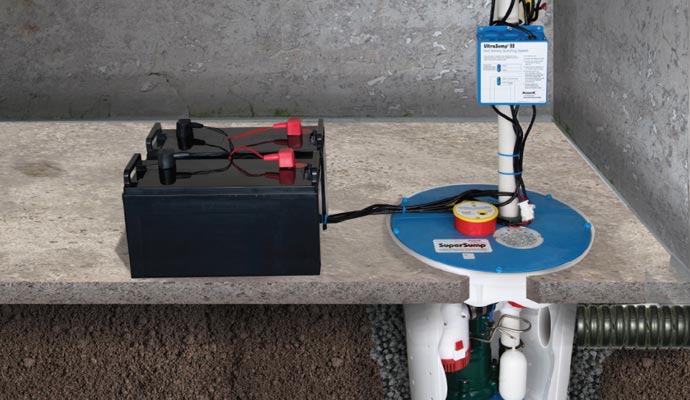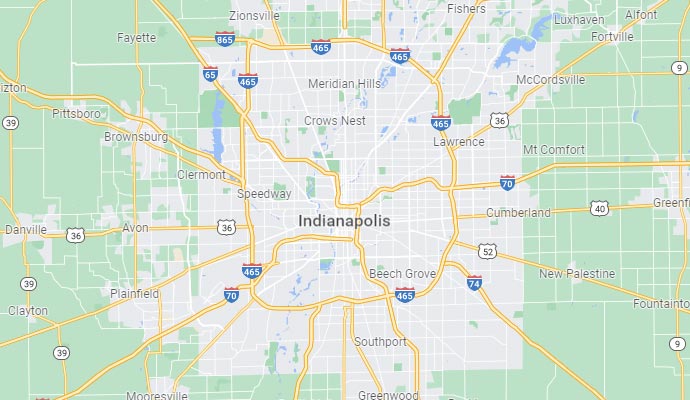Signs of Foundation Problems
Homeowners often wonder how to identify the different signs of Indianapolis foundation problems.
It’s definitely a good question to ask. Here’s why – the longer you wait to treat visible signs of damage, the more severe the damage can become. Left untreated, minor cracks and leaks can turn into serious structural issues that compromise the value and overall health of your home.
Your home’s structural integrity depends on the strength of your foundation. It supports everything else – walls, windows, floors, doorways, roof – so when your Indianapolis foundation is damaged, it can cause serious problems throughout your home.
Like most things in life, your Indianapolis foundation is subject to environmental stress. Expanding and contracting soil, excessive moisture and inadequate drainage are some of the most common threats to your home’s foundation. Over time, environmental stress can cause the Indianapolis foundation to shift, crack or settle unevenly. And homeowners can often miss the early warning signs of Indianapolis foundation damage.
Foundation problems can create several issues throughout the home regardless of the Indianapolis foundation type. This includes slab on grade foundations, basements and Indianapolis crawl space homes like pier and beam foundations or block and base builds.
Fortunately, most of these problems are rarely invisible, but signs of Indianapolis foundation problems need to be recognized as early as possible to correct (and sometimes even prevent) problems quickly.
Detecting Warning Signs Early is Key
Usually the signs are obvious – cracks in plaster walls, a Indianapolis basement wall crack that extends from floor to ceiling, doors that stick, sagging floors, pooling water near a slab foundation, or a wet Indianapolis crawl space after precipitation falls.
Some signs are less subtle, for example, strange smells coming from the Indianapolis basement or uncomfortable indoor humidity can signal structural problems. However, sometimes signs of Indianapolis foundation problems are not immediately associated with Indianapolis foundation damage and go unnoticed by the untrained eye.
Most Indianapolis foundation issues begin with the soil under and surrounding the home. Every building Indianapolis foundation is affected by the soil underneath and around it. Expansive soils contain minerals that absorb water. As the soil absorbs water, it increases in volume. The more water it absorbs the more its volume increases.
The process works like a sponge, the soil expands when wet and shrinks when it’s dry. Expansions of ten percent or more are not uncommon. This change in volume can exert enough force on a building or other structure to cause serious damage. As signs of Indianapolis foundation problems begin to manifest they can often be found in all rooms of the home.
For Indianapolis basement and Indianapolis crawl space homes, poor drainage and hydrostatic pressure is often the #1 culprit. As pressure builds beneath the surface around the Indianapolis basement or crawl space, force is excreted on walls that lead to cracked and/or bowing walls. These areas leave the Indianapolis basement vulnerable to intrusive subsurface water and invite leaks and water problems. Over time a damp Indianapolis basement will become humid and uncomfortable, inviting mold and allergens into the home.
How to Identify the Issue
To identify Indianapolis foundation problems, start in the Indianapolis basement or crawl space. Is there a musty odor? A leaking Indianapolis basement or Indianapolis crawl space can reveal Indianapolis foundation cracks and a musty Indianapolis basement smell or Indianapolis crawl space odor is a red flag. Excess moisture invites insects to enter, and insects in a basements or crawl spaces often point to Indianapolis foundation issues.
Inspect each room of the house. Carefully look at the walls, in particular where the wall meets the ceiling. House or slab Indianapolis foundation problems can cause walls to separate from the ceiling. Other warning signs include cracks splintering up the walls, any wall that is bowing outward or molding, and baseboards that are separating from their mitered corners.
Simply put, the movement and shifting of the soil underneath your home is often the root of Indianapolis foundation problems. Signs and symptoms of these problems include:
Basement/crawl space moisture: A wet, leaking Indianapolis basement or Indianapolis crawl space moisture can contribute to several home issues including musty smells, mold growth and sagging, uneven floors throughout the house. Water and moisture seep in through Indianapolis foundation cracks.
Bugs in the basement: Bugs such as centipedes, pill bugs, silverfish, earwigs, carpenter ants and roaches are drawn to wet basements and often enter through cracks in the foundation.
Uneven and sagging floors: Warped or sagging flooring can be related directly to Indianapolis foundation problems. Shifting soil, humidity from water seepage and inadequate Indianapolis foundation waterproofing can contribute to flooring issues.
Cracked and bowed walls: Cracks and bowing in walls can be fixed. However, there is often an underlying issue – soil movement under the foundation, hydrostatic pressure and poor water drainage are three common culprits.
Crooked doors: When a Indianapolis foundation settles, cracks or shifts, problems such as crooked doors develop in the house. Like flooring and wall issues, crooked doors may occur because of moisture issues in the Indianapolis basement or crawl space.
Cracked chimney: Poor exterior drainage or expanding soil can cause foundations to crack and settle, resulting in a tilting or cracked chimney. Pilings can be installed to reinforce an unstable chimney.
Standing water under house: Rainwater must divert away from the house via gutters, properly directed downspouts and drainage systems. Improper drainage often causes water to collect under the house, resulting in Indianapolis foundation problems.
What Causes Foundation Damage?
Often in the spring and summer, outdoor humidity levels rise and may be blamed for the swelling of woodwork within the home. This includes window frames, cabinetry and doors. However, cracks in the Indianapolis foundation also allow moisture and humidity into the home. The moisture from leaky basements or damp crawl spaces can cause the windows, doors and cabinets to not close or open correctly.
Foundation problems also can cause tiles to crack and hardwood flooring to buckle and warp. Warped hardwood floors, especially in a home set on a slab foundation, can be a sign that something is wrong with the concrete foundation.
In addition to expansive soil, many homes’ foundations are adversely affected by the following problems:
Improper drainage: The most common sign of poor drainage is water pooling and forming swampy areas near a home’s foundation; another indication is a damp or leaky basement. Poor drainage can occur as a result of clogged or damaged gutters, or because the land surrounding a home isn’t properly graded away from the structure.
Water leaks under the slab: Slab foundations conceal sewer lines and water pipes; when a leak develops in hidden line, it can cause the slab to deteriorate. This type of problem may cause moist areas in interior floors, or homeowners may notice a sudden spike in their water bills – but more often than not a slab leak will go unnoticed. Leak isolation testing is the preferred method for detecting slab leaks.
Tree root intrusions: Large trees can cause Indianapolis foundation problems as roots grow through the soil underneath the home. The intruding roots can exert significant pressure on under-slab water pipes and Indianapolis basement foundations. They can also leech moisture from the ground, causing soil to contract away from the home.
Details
Published: 22 June 2017

















